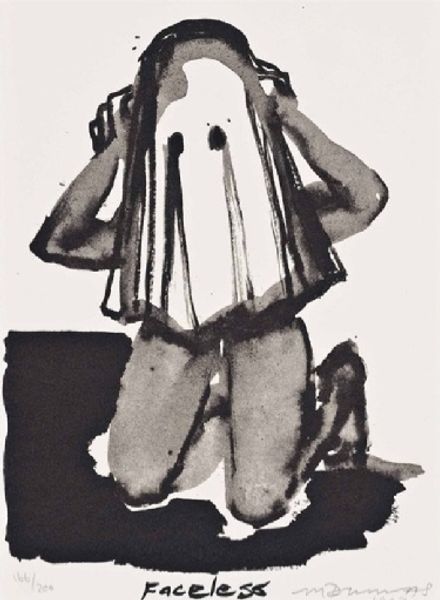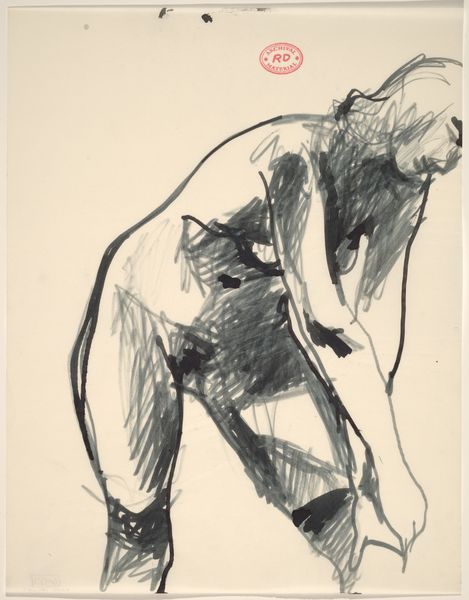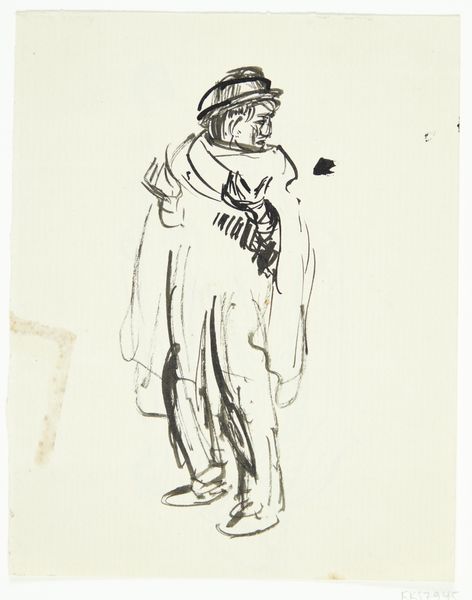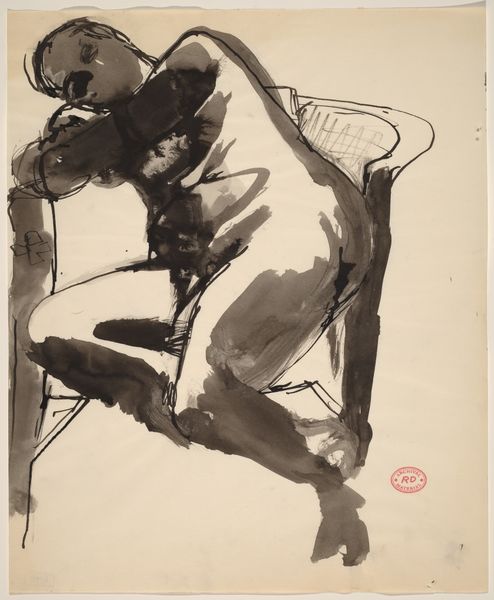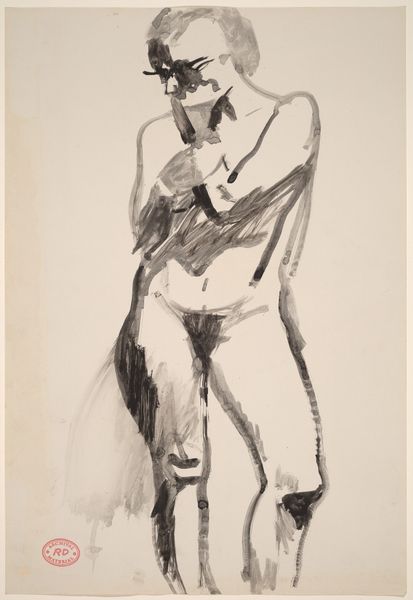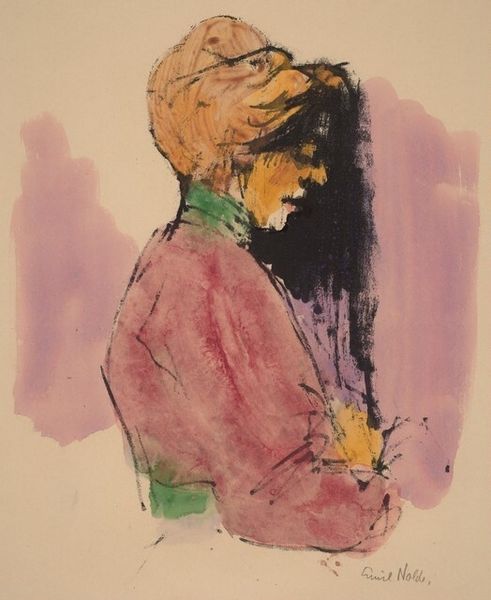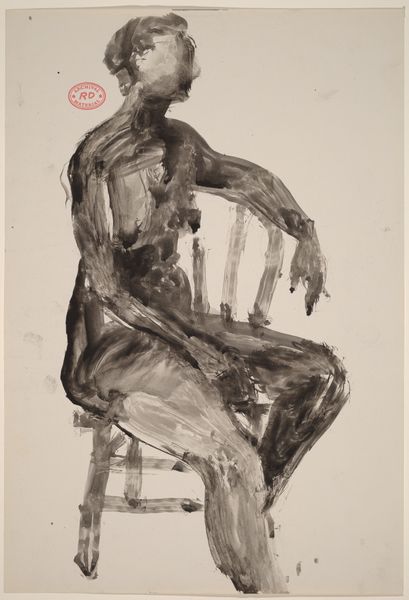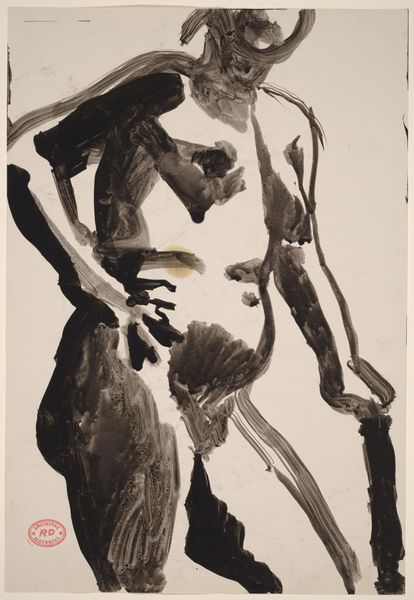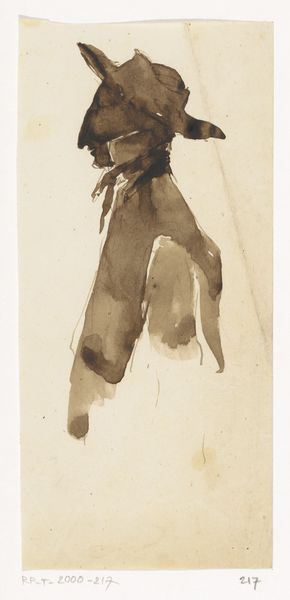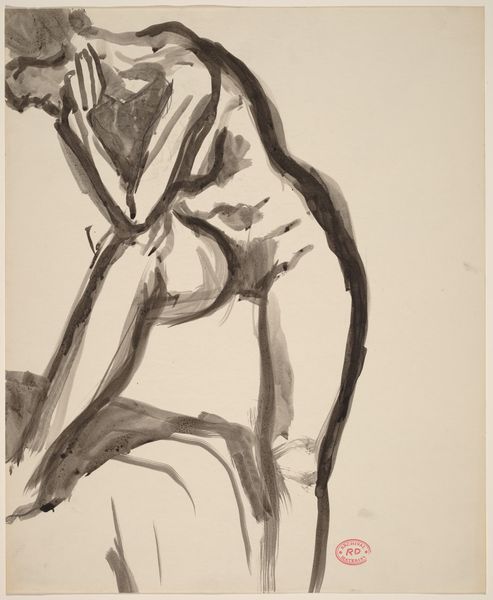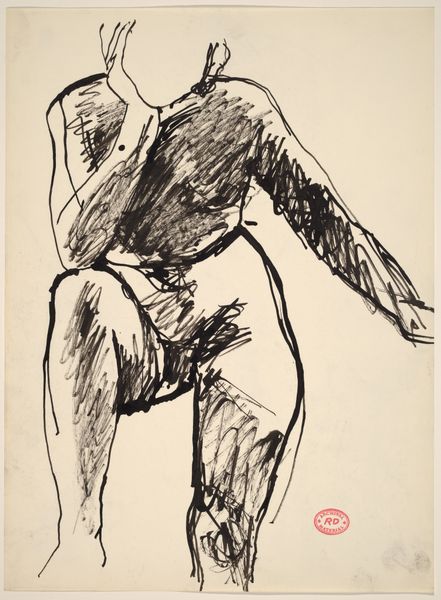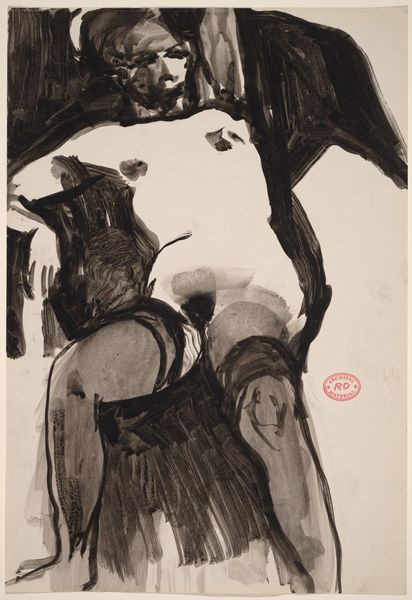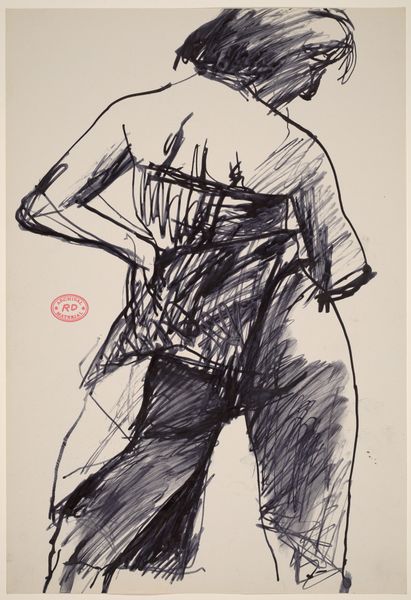
color-lithograph, print, dry-media
#
art-nouveau
#
color-lithograph
# print
#
caricature
#
caricature
#
dry-media
#
expressionism
Dimensions: 24 1/2 x 15 11/16 in. (62.23 x 39.85 cm) (image)
Copyright: No Copyright - United States
Curator: Here we have "The Peddler," a 1913 color lithograph by Emil Nolde, currently residing at the Minneapolis Institute of Art. It’s a striking piece, wouldn't you say? Editor: Striking is one word for it! It hits you, doesn't it? A slightly sinister figure rendered with raw immediacy. It's intriguing and vaguely unsettling; the world-weariness practically leaps off the paper. Curator: That immediacy is characteristic of Expressionism, and Nolde was a key figure in that movement. Note how the lines are deliberately rough, almost violently applied. He eschews traditional artistic refinement to convey deeper emotional truths. In this work, Nolde employs caricature to symbolize the burdens the common laborer carried. Editor: Symbolism! That's what draws me. The heavy pack practically dwarfs him – a potent representation of labor's toll. Those exaggerated features... almost grotesque. Are we meant to feel pity? Or something more complicated? I mean, look at that striped shirt; a burst of unexpected color amidst the otherwise somber tones. It’s almost mocking in its cheerfulness, creating such emotional tension. Curator: Nolde uses color masterfully for precisely that purpose. He understood how visual elements, when combined, evoke layered feelings and trigger different modes of perception, rooted in social constructs, histories, and lived experiences. The red and white of the peddler’s shirt could symbolize struggle, labor, and an everyman’s yearning. And notice how the figure's downward slant suggests physical and even existential weariness, not only highlighting social inequity, but evoking an emotion familiar to all humans. Editor: Absolutely. The whole piece really feels…visceral. It avoids easy interpretations; the ambiguity forces engagement. It asks us to question what we think we know about labor, class, and the human spirit. It feels more vital than mere commentary. Curator: Exactly! Nolde’s art isn’t just observational. It’s designed to confront us with uncomfortable truths, both about the world around us, and the truths held by those burdened and heavy laden among us. "The Peddler" encourages us to examine our relationship with value systems. Editor: Well, Nolde definitely succeeded in stirring something profound, didn't he? Even a century later. It is always amazing to observe art continuing to perform new work and yield unexpected meanings.
Comments
No comments
Be the first to comment and join the conversation on the ultimate creative platform.
